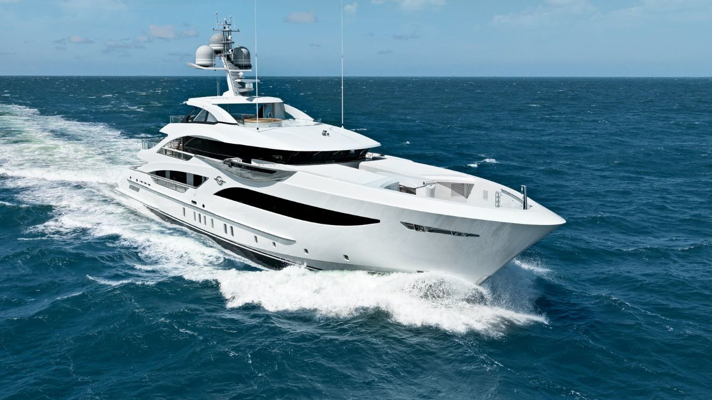Heesen Yachts has delivered the 56-metre Fast Displacement Hull Form (FDHF) yacht Galvas. It is the second Heesen yacht to comply with the latest emissions regulations thanks to an Selective Catalytic Reduction (SCR) system that reduces NOx exhaust emissions.
Two MTU 8V 4000 M63 diesel engines coupled with the ultra-efficient FDHF steel hull allowed Galvas to exceed its top speed of 15.5 knots during sea trials. At a cruising speed of 13 knots, it has a range of 3100 nautical miles. The yacht with yard number 18556 and previously known as Project Neptune, is also IMO Tier III compliant.
Jonny Horsfield of British firm H2 penned its profile that was based on Heesen’s engineering platform for the 55-metre FDHF Steel Class. With a gross tonnage of 770, the yacht accommodates twelve guests in six staterooms. British design studio Reymond Langton was responsible for the interior design. Sea trials were conducted on the North Sea and the Galvas is now on its way to the Mediterranean.
Fast Displacement Hull Form
The patented Fast Displacement Hull Form (FDHF) was developed by Van Oossanen Naval Architects. The hull form is efficient over the entire speed range instead of in a restricted speed interval around the maximum speed. It can be applied to all yachts and commercial vessel types. According to Van Oossanen, 'At semi-displacement speeds, the resistance values displayed by the FDHF are fifteen to twenty per cent better than those of well-designed hard chine hull forms.' The FDHF also increases comfort onboard due to better sea keeping and wave reduction.








